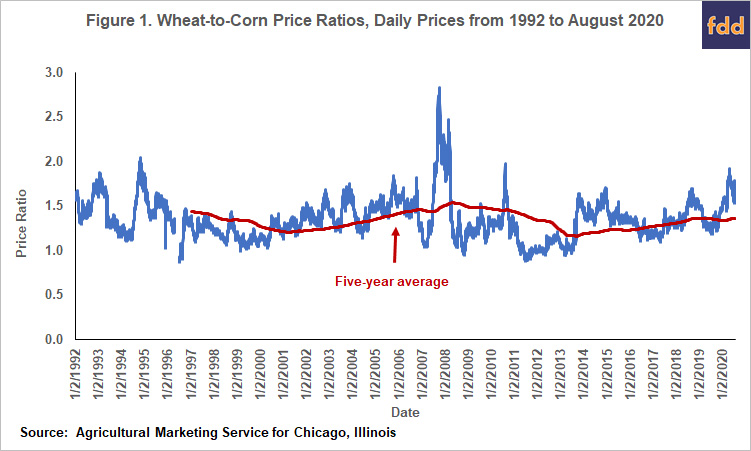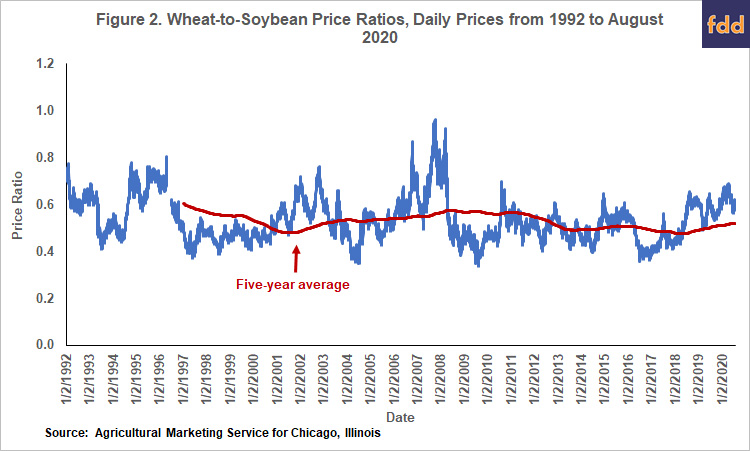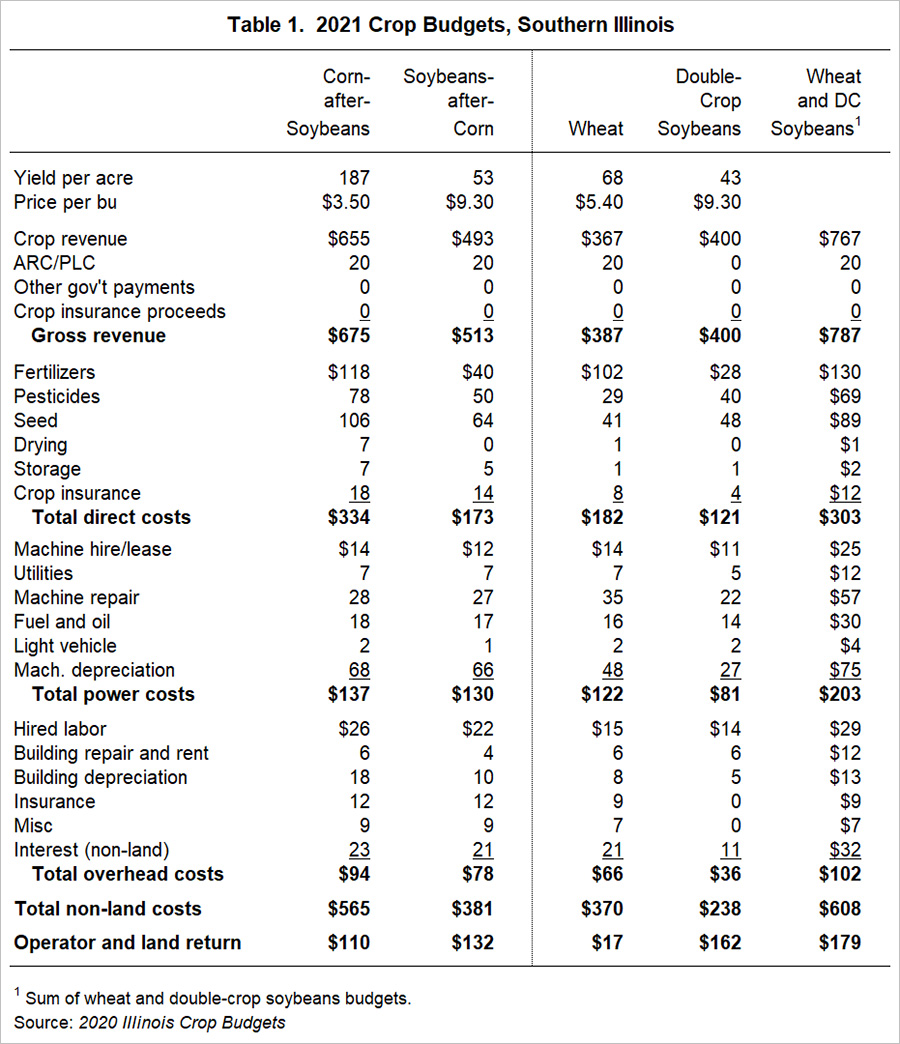This article was originally published on the farmdoc Daily website by Gary Schnitkey, Krista Swanson and Carl Zulauf.
As wheat planting season approaches, we evaluate expected returns for crop rotations that include wheat. Given current 2021 grain bids, a combination of wheat and double-crop-soybeans is projected more profitable than either corn or stand-alone-soybeans in southern Illinois. Wheat alone is not more profitable than either corn or stand-alone soybeans. In central Illinois, stand-alone soybeans are projected more profitable than wheat-double-crop-soybeans.
Current 2021 Commodity Bids in Historical Perspective
Current bids for 2021 delivery in southern Illinois are:
- Wheat: $5.40 per bushel
- Corn: $3.45 per bushel
- Soybeans: $9.15 per bushel
Currently, the wheat-to-corn price ratio is 1.56 ($5.40 wheat price / $3.45 corn price). Historically, the wheat-to-corn price ratio has averaged 1.34 from 1992 to the present (see Figure 1). Wheat prices now are relatively more favorable than corn prices from a historical perspective.

The current wheat-to-soybean price ratio equals .62 ($5.40 wheat price / $9.15 soybean price). Historical the wheat-to-soybean ratio averaged .53 from 1992 to the present (see Figure 2). Current bids place the wheat-to-soybean price ratio well above these historical averages, again suggesting that wheat prices are relatively high compared to soybean prices.

Southern Illinois Budgets
Table 1 shows 2021 crop budgets for Southern Illinois. These are adaptations of budgets published in the 2021 Illinois Crop Budgets, with commodity prices being the only values that have been changed. Commodity prices are set at current cash bids for 2021 delivery. Operator and land returns give the return to each crop and represent a return to both the farmer and landowner. If the farmland is cash rented, the cash rent would need to be subtracted from the operator and land return to arrive at farmer return. Property tax and mortgage interest would be subtracted from operator and land returns to arrive at farmer return for owned farmland.

The operator and land return for stand-alone wheat without double-crop soybeans is $17 per acre. This return is based on a 68 bushel per acre yield, which also happens to be the average estimated yield for Illinois in 2020. The $17 operator and land return is below the $110 return for corn with a 187 bushel per acre yield. The wheat yield would have to average over 85 bushels per acre for the stand-alone wheat return to exceed corn return. The $17 return also is below the $132 operator and land return for soybeans. For stand-alone wheat returns to exceed soybean returns, wheat yields would have to be above 89 bushels per acre.
Table 1 also shows double-crop soybean returns. Yields are at 43 bushels per acre, based on trend yields from Illinois FBFM farms raising double-crop soybeans. Wheat combined with double-crop soybeans has an expected return of $179 per acre, higher than returns for both corn ($110 per acre) and soybeans ($132 per acre).
Operator and land returns for southern Illinois from 2014 to 2019 averaged $103 per acre for corn, $181 per acre for soybeans, and $157 wheat-double-crop soybeans. On average, wheat-double-crop-soybeans have been more profitable than corn in recent years, but less profitable than soybeans. Current 2021 bids cause wheat-double-crop soybeans to be more profitable than soybeans and corn.
Read the full article online at farmdoc Daily.




 and then
and then